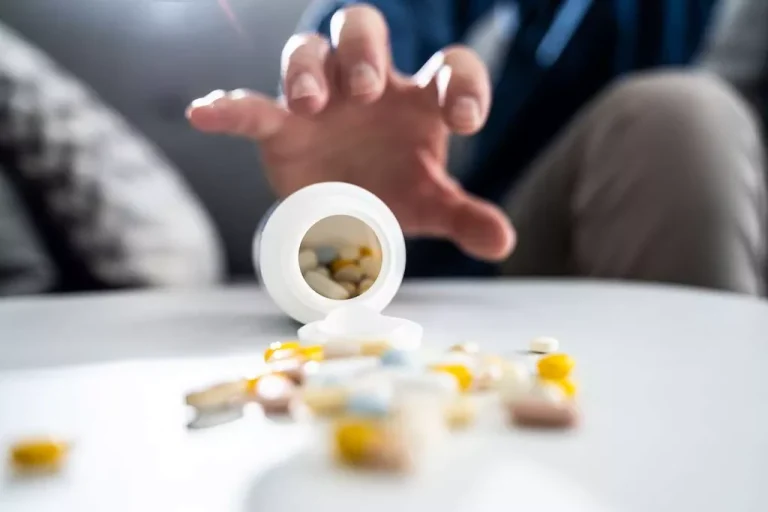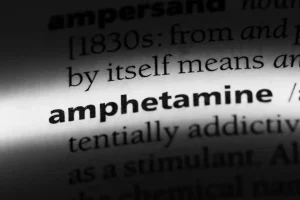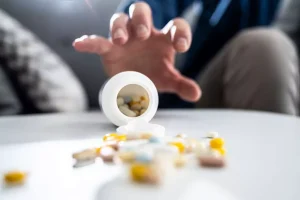We came from very humble beginnings, and would love to tell you our story of success and recovery. At our sober living homes for men in Los Angeles, we incorporate the entire family into the structured recovery process. An important feature of sober living rehab aftercare is the hands-on support from professionals who have years of experience in the field.
Having a support system and sober friends aids with the difficulty young adults face in today’s social climate. Participating in a community of like-minded men helps to keep them from social scenes such as bars, nightclubs, and house parties where alcohol and drugs can be easily accessed. Plain and simple, Chelsea House Review is amazing…it’s hard for me to describe in words how wonderful this program really is. i can truly say that as a mom, they have given me my son back.
Young Men’s Sober Living in Los Angeles
This house has helped me find the tools to overcome any challenges that may come up in life. I have made some of my best friends in this program and have a giant community that I know I can rely on at any time. This house has helped give me hope again and for that I will be eternally Chelsea House Review Review grateful. Our structured sobriety programs, compassionate staff, supportive community and decades of experience support young men and their families at every step on their path to recovery. They think that a collaborative approach is necessary for your son’s recovery. At every step of the journey, their family program structure is designed to offer assistance, direction, and wisdom.
Chelsea House Review was relocated to Artesia Blvd. in Los Angeles, California in 1987 to continue to serve men in recovery.
Clients receiving treatment at an outpatient rehab typically do not require hospitalization or intensive supervision and support. Outpatient addiction counseling and recovery education are often offered during the morning, evening, night, and weekend, allowing clients to tailor treatment to their own schedule. Partial hospitalization (PHP) and intensive outpatient (IOP) programs are the most time-intensive and are designed for clients who are at an increased relapse risk and/or who need more robust therapeutic support. Chelsea House Review has been recognized nationally by professionals in recovery as a model for structured sober living in Los Angeles. Moreover, we have a stellar reputation of providing young men with the tools for success and community support they need in order to live a productive and happy life no matter what challenges they encounter along the way.
Find Your Recovery Community at Chelsea House Review.
- This program provides parents the support to stay involved in the recovery process and embark the family in a healing path (something that seemed impossible in the midst of addiction).
- Patient and therapist meet 1-on-1 to work through difficult emotions and behavioral challenges in a personal, private setting.
- In the early 1990s, many families of teenagers and young men approached Chelsea House Review to help address their son’s addictions.
- Unlike other rehab aftercare centers and sober living homes, New Life Hosue uses a peer-grouping method that helps those in recovery connect with individuals going through the same life experiences.
- Have you or a loved one received treatment at Chelsea House Review – Los Angeles Sober Living?
With this, he had a vision of helping men abstain from alcohol and drug dependence. To add, he wanted to transform their lifestyles and teach them life skills necessary to succeed. Our Alumni Program is a network of compassionate members from our recovery community dedicated to supporting the next generation by sharing their own experience of achieving their goals and aspirations through our programs. New Life involves the families, and gives these young men long term community.
Sign in to see who you already know at Chelsea House Review
Their care for one another, even long after they leave, is unparalleled. Today, President Biden is issuing the first-ever National Security Memorandum (NSM) on Artificial Intelligence (AI). The NSM’s fundamental premise is that advances at the frontier of AI will have significant implications for national security and foreign policy in the near future.
SLHs also provide a strong sense of community that can lead to the kind of deep and lasting connections with other sober individuals that supports a new, healthy lifestyle. From the time we first contacted New Life to today (our son is a graduate from this program and about to move out of the recovery home. He graduated after 14 months and moving out after 17 months.), it has been a blessing. This program not only prepares these young men to achieve sobriety but it also gives them the tools to sustain it. This program provides parents the support to stay involved in the recovery process and embark the family in a healing path (something that seemed impossible in the midst of addiction). As our son actively works the program, we, parents, are given the tools and education to repair and foster healthy family dynamics and strive for a joyful life. We saw our son mature, we matured and learned a new way of life by setting boundaries for our adult child while loving him unconditionally.
If you’re new in recovery, and experiencing intense loneliness, your sponsor can help. They answer questions and help you connect the dots between the advice you hear in AA/NA meetings and how to apply that advice in your daily life. If you’re curious about a finding a sponsor, ask anyone at an AA or NA meeting, click the link above, or talk to your therapist or counselor. Once you have a sponsor, they should be the first number on speed dial in your phone – and you should use that number often.

Why can recovery be a lonely process?
After starting your addiction recovery process, you may experience an array of emotions, one of which is boredom. Because boredom has the potential to increase your likelihood of relapse, it’s essential to find ways to overcome or avoid the feeling. While avoiding social media altogether may be incredibly difficult, it’s important to limit the amount of time you spend on social media. Because social media and parasocial relationships keep you from building real relationships, it can also help to drive feelings of isolation and loneliness. If you’re currently in recovery, you likely know the pain of isolation in the depths of substance use disorder. However, while the correlation between SUD and loneliness is clear, you may not have recognized that there can be a significant risk of loneliness in recovery, too.
Start your recovery with Massachusetts Center for Addiction
Most importantly, though, is mourning the loss of the drug or alcohol. Or you could write an obituary for the https://ecosoberhouse.com/ drug or drink and bury it. Writing and expressing these feelings of anger and loss can help you move on.
How Do You Deal With Isolation in Recovery?

True friendships can help build self-esteem and give you accountability throughout your recovery. When people are held accountable loneliness in recovery in recovery, they are less likely to relapse. You can practice accountability with counselors in treatment and other companions.
The Path to Recovery
Beginning recovery from opioid addiction with effective treatment is the best way to improve your chances of long-term success. Tips to combat boredom in recovery include working toward a goal or focusing your mind on a new hobby. For many, sobriety can feel like completely starting over, which can be scary. At any moment, someone’s aggravating behavior or our own bad luck can set us off on an emotional spiral that threatens to derail our entire day. Here’s how we can face our triggers with less reactivity so that we can get on with our lives. Despite accounting for only a quarter of all postsecondary enrollment, they were responsible for nearly half of the growth, with a 4.7 percent increase over last spring.
Avoid Social Media
Interestingly, as someone who meditates, we call doing nothing “meditating” as opposed to boredom. People who formally meditate, choose to do nothing — they just sit there, in observation of breathing, thinking, feeling. If we find ourselves without new things or habits to fill our time and space, it means we’ve made great progress.
Many people feel lonely during addiction recovery as their normal social circle is stripped away. Most of those who struggle with addiction surround themselves with other people with addiction. They do this to feel better about what they’re doing and not get lectured. However, in addiction recovery, the last thing you want to do is be part of a toxic social circle that might encourage you to use it again. Social support circles also provide you with resources for advice.
Opera singer Alfie Boe on finding the tools to deal with depression and loneliness – The Yorkshire Post
Opera singer Alfie Boe on finding the tools to deal with depression and loneliness.
Posted: Sat, 16 Sep 2023 07:00:00 GMT [source]
Those suffering from an SUD turn to substances to combat feelings of loneliness, and taking away these substances can make a person feel more isolated. Recovery is a time when individuals need to rebuild broken trust and mend relationships that were strained or lost due to substance use. The lack of meaningful relationships can leave individuals feeling unsupported, further isolating them. That is why restoring relationships during addiction recovery is so important. However, it is a difficult journey back from the social isolation that is a standard element of substance use disorders. With this last tip, we want to remind you that – although this lonely moment or phase may be miserable – you’re in recovery.
- Unfortunately, as a culture we spend more time alone now than we used to.
- Providing help to others allows you to maintain sobriety and is excellent for your overall health.
- Treatment programs for addiction are standing by to help you take that first step.
The Male Friendship Crisis
The journey of recovery requires leaving the world of substance use behind, including any relationships that may hinder your progress. If you’ve damaged your previous relationships, it can take significant work to gain those back. Fortunately, there are ways that you can deal with loneliness while you’re working on recovery.

Since intoxication can lead to riskier behavior, blackouts can be dangerous. For those who Substance abuse tend to black out when drinking, it can help to have trustworthy friends nearby to keep an eye out. It might also be best for these individuals to avoid excessive drinking. There’s nothing wrong with being affectionate with people we are familiar with.
FAQs about Emotional and Psychological Effects of Being Drunk
- She leaned in close, and with her hot, alcohol-soaked breath, explained how she wasn’t like me, how she could take alcohol or leave it.
- A person is sober or low-level intoxicated if they have consumed one or fewer alcoholic drinks per hour.
- All other factors—such as genetics, personality or environment—are just shaping our drinking motives, according to this model.
- At this stage, significant loss of coordination and memory blackouts can occur after consuming 4-5 drinks for women and 5+ for men.
Usually, people in the first stage of alcoholism are not drinking every day, and they are still able to perform daily activities. Although drinking may not consume their thoughts, they may need to drink more to reach the desired level of intoxication. During this stage, someone may believe they are still functioning because they have a job and they are successfully maintaining relationships. In reality, this isn’t true, because after they consume their first alcoholic drink, they usually struggle to control their drinking. Once, on the phone with a guy I’d met on the internet who also didn’t drink, I mentioned casually that I was stressed about not accomplishing enough in my day.

You drink when you don’t want to.
You don’t care if your friend loses his job or if your sister never sees her children again, you’re ordering more shots. Your body functions will slow so much that you will fall into a coma, putting you at risk of death. This tipsiness begins when alcohol enters the body’s bloodstream and starts to affect the functions of the brain and body. According to a 2015 https://ecosoberhouse.com/ national survey, more than 86 percent of people ages 18 and older say they’ve had alcohol at some point in their lifetime.

Which Drunk Personality Type Are You?
- People who frequently drink may feel less drunk than those who do not.
- These drinkers may be using alcohol to cope with other problems in their life, particularly those related to anxiety and depression.
- You think, “wow, I’m actually a super good dancer”, and you continue to dance while spilling the drinks of everyone within arm’s reach.
- Like other poisons, the body works to rapidly remove it from the blood, which makes a lot of work for the liver and kidneys.
- During this stage, individuals are drinking every day, usually to avoid uncomfortable withdrawal symptoms.
However, alcohol can also lower our guard in the company of strangers, making us more likely feeling drunk when sober to engage in risky sexual behavior. Studies show a link between increased alcohol consumption and unsafe sex—not to mention that drunk sex is not consensual sex. And while that first post-work margarita may feel relaxing in the moment, alcohol can elevate anxiety levels hours later — sometimes even into the next day. Less than a year into my sobriety, I had another memorable conversation with C.

Identifying the early stages of alcoholism can help prevent dependence and addiction. Some individuals may need additional help breaking their addiction to alcohol. No matter what stage of alcoholism someone is currently experiencing, there is hope to get through their alcohol addiction. Medically-supervised detox followed by an inpatient treatment program can increase the likelihood of successful recovery and help people regain control.
Participants were asked to avoid alcohol for 24-hours and food for between 3 and 4 hours before the study. All experiments were presented using experimental software E-Prime 1.2 (Psychology Software Tools, Pittsburgh, PA). In both the Free and Serial tasks, participants were presented with 3 blocks of 15 study words on ptsd alcohol blackout a computer screen and asked to remember them. Stimuli were word lists taken from Roediger and McDermott [38], totalling 270 unique stimuli split into 18 blocks (9 blocks free recall task, 9 blocks serial recall task). Blocks for each individual task were presented pseudo-randomly, counterbalanced across participants.
Psychologist disproves testimony that Torre, Jr. blacked-out – KUAM.com
Psychologist disproves testimony that Torre, Jr. blacked-out.
Posted: Wed, 19 Jun 2019 03:01:17 GMT [source]
PTSD and Alcoholism in Women

PTSD and alcohol abuse may occur together due to the tendency of people diagnosed with PTSD to engage in self-destructive behavior and the desire to avoid thinking about the trauma. There is a small but growing literature of pharmacotherapies to treat AUD with comorbid PTSD. The conclusions from this review suggest that there is not one agent that has clear evidence of efficacy in this comorbid group. There was at best weak evidence to support the use of medications to treat AUD among those with comorbidity with PTSD.
- Learn more about how to help children and adolescents cope with disasters and other traumatic events.
- This instrument has demonstrated reliability and validity in a similar setting to this study [45].
- It is important to note that there are several limitations to the current research.
- Traumatic memories represent an exception, as they tend to stick with us as a sort of survival instinct.
- From my discussions with people who have experienced blackouts, the amnesia has nearly instantaneous onset and ending.
- Going through a trauma—whether or not you develop PTSD—can lead to alcohol use problems.
Alcohol and Substance Use in Post-Traumatic Stress Disorder (PTSD)
Studies show that the relationship between PTSD and alcohol use problems can start with either issue. For example, people with PTSD have more problems with alcohol both before and after they develop PTSD. Also, drinking problems put people at risk for traumatic events that could lead to PTSD. Stress and trauma are both causes of alcoholism, making PTSD a serious risk factor for developing alcohol addiction. When you use alcohol to deal with PTSD symptoms, you may feel better in the moment, but those feelings always return—often more severely. Prolonged blackout drinking can also cause serious problems throughout your life, which may worsen your mental health and make you even more reliant on alcohol.
Finding Treatment for Alcohol Addiction and PTSD
Combat exposure is a common source of trauma, and these wounds may not heal on their own. The VA estimates that 11-20% of the veterans deployed to Iraq or Afghanistan may have PTSD. These individuals are at higher risk to engage in unhealthy behaviors like blackout drinking, particularly if they are not receiving mental health support. The final RCT was a 4-week inpatient study conducted https://ecosoberhouse.com/ with 53 individuals with PTSD and AD (Kwako et al. 2015). This was a proof of concept study evaluating the neurokinin-1 receptor antagonist aprepitant. Neurokinin-1 receptors are found in the amygdala and hippocampus and are thought to be involved in stress-response circuitry; antagonism of neurokinin-1 receptors blocks stress responses in laboratory animals (Schank et al. 2011).
How do children and teens react to trauma?
Some studies suggest that alcohol consumption can increase the likelihood of the development of PTSD in women, due to the increased likelihood of exposure of traumatic events that occurs as a result of alcohol abuse. Finally, AUD and PTSD are two of the most common mental health disorders afflicting military service members and veterans. As such, continued research on the development of effective screening, prevention and treatment interventions for service members and veterans is critically needed. Finally, two studies in this virtual issue focus on military personnel and veterans. The first study by Stein and colleagues (2017) reports on alcohol misuse and AUD prior to enlistment in the Army, and highlights the strong association between prior AUD and subsequent development of PTSD among newly enlisted soldiers. The second study is a laboratory study (Ralevski et al., 2016) among military veterans with AUD and PTSD.
- Difficulty with recruitment may be another reason investigators have included subjects who are taking other psychotropic medications even though this complicates the interpretation of results.
- A review of PTSD and alcohol abuse statistics indicate that nearly 28 percent of women diagnosed with PTSD report concerns about alcohol abuse and dependence.
- Data from the Department of Veterans Affairs indicates that as many as 63 percent of veterans diagnosed with alcohol use or other substance use disorder also meet the diagnostic criteria for PTSD.
- One study (Petrakis et al. 2012) found that the active control, desipramine, was more effective than the serotonergic medication in terms of alcohol use outcomes.
Upcoming Observances and Related Events
Conditional disorders
- Use these free digital, outreach materials in your community and on social media to spread the word about mental health.
- In this study, we hypothesized that AUD patients exposed to potentially life threatening trauma, and those with PTSD comorbidity have an aggravated drinking problem as well as dysregulated neuroimmune function.
- To begin, two systematic reviews discuss the current state of behavioral (Simpson et al., 2017) and pharmacological (Petrakis & Simpson, 2017) treatments for comorbid AUD/PTSD.
- Dual diagnosis conditions such as addiction to alcohol and PTSD should be treated together for the greatest chance of recovery from both.
- Short-term memory is sometimes called scratchpad memory—it records events for only about three minutes before they fade.

Areas of executive function regain capacity for impulse control, self-regulation, and decision-making. Although addiction tends to cut people off from longtime friends, social support is a significant predictor of recovery. They may know something about the person’s deepest aspirations and voice them as a reminder that can help the person remain on the road to recovery. And they can help plan healthy joint activities to ensure that there are good days.

The Importance of Family and Couples Therapy in Recovery
- But new meaning and purpose can come from many sources— family, social connections, work, or renewed recreational interests.
- The type of medication a doctor prescribes depends on the type of addiction that is being treated.
- This may sound paradoxical but it’s a clear marker of having gone through the internal change and come out more than free from addiction.
- Another one of the most important ways to support recovery is to understand that multiple relapses over a number of years are typically part of the process.
- He did all the work, though, and is now a wonderful father of a young boy and partner to his son’s mother.
By engaging in a professional treatment program, you can begin the path to happier, healthier, and sober living and learn improved coping skills so you can live a drug- and alcohol-free life. For some people, committing to complete abstinence is not desirable or is too daunting a prospect before beginning treatment. Many people desire only to moderate use and bring it under control. In fact, there is growing support for what is called harm reduction, which values any moves toward reducing the destructive consequences of substance abuse. Researchers find that taking incremental steps to change behavior often motivates people to eventually choose abstinence. Nevertheless, many treatment programs, including Alcoholics Anonymous, require a commitment to complete abstinence as a condition of admission.
Family Matters
- No matter which pathway of recovery a person chooses, a common process of change underlies them all.
- By learning about addiction and recovery, your loved ones can move from feeling helpless to becoming active partners in healing.
- Therapists help you break down overwhelming goals into manageable steps, keeping motivation high.
- While it can take a great deal of courage to pursue adding to a personal patchwork, it is imperative to have appropriate clinical, self-help, loved one, or coaching support when making these shifts.
- The core thinking is that chronic, immoderate drug use causes brain pathology, which itself ultimately controls a person’s behavior such that drug use becomes compulsive.
- I’ve helped thousands of people better understand the risk and protective factors that influence why one person develops addiction when another doesn’t.
- Your relationships and friendships are likely to change as you overcome your addiction.
Brains are plastic—they adapt to experience—and people can change and grow, develop an array of strategies for coping with life’s challenges and stressors, find new means of satisfaction and reward, and negotiate life ahead. Millions of people do, whether they were once compulsive users of opiates, alcohol, or gambling. Her Therapeutic Play Foundation offers activities designed to improve resilience and coping skills through creative arts, play and sports. It provides individual, couples, group and family therapy for Black, Latinx, LGBTQ+ and other members of marginalized populations. In addition, self-care is a vital foundation for a healthy new identity. At the very least, self-care should include sleep hygiene, good nutrition, and physical activity.
Tips for Overcoming an Addiction
People often take a myopic view when they begin seeking help for addiction. The consensus is that people in recovery want freedom from their drug or compulsion, whether that be drugs, alcohol, food, sex, or gambling, to name a few. Opioid use disorder https://thetennesseedigest.com/top-5-advantages-of-staying-in-a-sober-living-house/ (OUD) is defined as a problematic pattern of opioid use that causes significant impairment or distress. Substance use disorder (SUD) is defined as a problematic pattern of substance use leading to clinically significant impairment or distress.
What is the Role of Therapy in Recovery?
- In one study, two-thirds of the adults relapsed in social situations in which they experienced urges and temptations to drink or use.
- Don’t think only about the negative aspects of your object of addiction; think, too, about the benefits it offers.
- I recently published an article making a plea not only for heterogeneity but agnosticism about the brain disease model, which is my current position.
- Recovery is characterized by continual growth and improvement in one’s health and wellness and managing setbacks.
- Medications can be utilized to treat symptoms of withdrawal, help people remain in treatment, and prevent relapse.
The goal, Rutherford explains, is to construct a “recovery story” built from both qualitative and quantitative data for each individual seeking support. My approach definitely isn’t popular (yet), but I am developing the Raising Resilient and Addiction-Resistant Top 5 Advantages of Staying in a Sober Living House Kids program to provide a viable alternative to abstinence-only messaging. Each semester that I taught college courses on addiction, I was dismayed by students’ lack of basic knowledge about what psychoactive substances actually do in their brains and bodies.
The change destabilizes the adaptation the family has made—and while the person in recovery is learning to do things differently, so must the rest of the family learn to do things differently. Otherwise, their behavior is at risk of cementing the problem in place. Peer or mutual support is not restricted to AA or NA; it is available through other programs that similarly offer regular group meetings in which members share their experiences and recovery skills. SMART Recovery is a secular, science-based program that offers mutual support in communities worldwide as well as on the internet and has specific programming for families.
Treat Co-Occurring Mental Health Conditions
Such a simple maneuver maintains all the behavioral actions of drinking—while eliminating the active drug (ethyl alcohol)—and that can be enough to at least partially mollify the brain’s reward pathway. A lot can be at stake in a relapse, including life itself; doing whatever is necessary to ensure a way out of high-risk situations is essential. Having a “parachute” ready for such eventualities takes a little preparation and knowledge that some situations (such as a social event or party) will in fact be high risk. Strategically avoiding an event, a person, or a situation with a polite excuse can yield lifesaving dividends, especially early in recovery. No matter the pathway to recovery, the mechanisms by which people change are the same.
Whether you have one day sober or 10 years, recovery presents challenges. There are times when youll doubt yourself and get pushed outside of your comfort zone. At this point, you can either conclude that you dont deserve it or have what it takes, or you can try again.
For with changes comes adjustments, which can be challenging. So it may take some time before you truly feel content in your new life. But the following insights may ease your journey and improve your outlook.
How common is relapse?
Over time, our ability to cope and come up with solutions that work for us becomes easier and easier. So understanding and addressing these fears is paramount. Living with anxiety and maintaining sobriety doesn’t mean that you’re just trying to survive. It means maverick house sober living you need to adopt strategies that foster resilience and strengthen your emotional well-being in the face of challenges.
- They may have wronged some of these people, or they might be embarrassed about how they once acted.
- You will not be left alone to fend for yourself; you will be guided to use healthy coping mechanisms.
- Yet, this is far from the way that drug rehab centers actually operate nowadays.
What are the Causes and Risk Factors of Anxiety?
If your friends don’t want to hang out with you unless you’re drinking, then you know where you stand with each other. For years, I worried about the impact of sobriety on my social life. I honestly did not know what people did for fun without being slightly or very drunk. Don’t let difficult addiction recovery art decisions and conversations with loved ones be the excuse you use to keep drinking alcohol. If you didn’t want to change, you wouldn’t bother to get sober. Here are some common fears in sobriety and what you can do to manage them.
Lifestyle
The best way forward for your recovery from alcohol or substance use is to incorporate a wide variety of strategies that will help foster success. Remember to care for yourself, seek supportive relationships, and consider seeking help from a therapist. For many people with a substance use disorder, it’s simply a matter of never having learned the appropriate way to manage anger. Talk to your therapist, other healthcare provider, or sponsor about how to deal with your anger in ways that won’t cause you to harm yourself or others or turn to alcohol or drugs.
Leave it alone, give it time, and it will go away on its own. If all of your friends abuse alcohol and/or your spouse abuses alcohol, it makes a lot of sense to fear what will happen next. What you’re really afraid of is the unknown and that you may be unable to handle it. Depending on how deeply ingrained alcohol is in your life, you may be staring down an entire life makeover.
The idea of getting sober in rehab only to relapse on the outside is a frightening thought. What you should know is that almost all addicts seeking help have relapses. It just means that you have to get up and try again. Working with a support group and a sponsor after you leave rehab is a great way to keep your sobriety intact.
When you stop using drugs or alcohol, you will experience a range of withdrawal symptoms. This can include physical withdrawal symptoms (e.g. aches and pains) and psychological withdrawals (e.g. strong cravings). Many addicts worry that withdrawals will be too painful to cope with.
Worried that they may be abandoned by the people they love or judged by others, alcoholics and narcissism some people refuse to admit that they have a drug problem or reach out to others for support. Yet without taking these steps, there can be no recovery. Support groups such as Alcoholics Anonymous, SMART Recovery, or other local sobriety support groups offer a community of people who are going through similar challenges.

However, it is important to drink plenty of water throughout the day if you are drinking alcohol. Drinking water before bed will also help you to sober up more quickly. Flushing alcohol from your urine can be a complex process that requires a combination of hydration, nutrition, rest, and urination frequency. By following the tips outlined above and taking care of your body, you can speed up the elimination of alcohol from your system and improve your overall health. However, it’s important to note that the best way to avoid detection on a drug test is to abstain from alcohol altogether or to wait until it has completely left your system.
How often should you drink water to flush out alcohol?

Yes, alcohol dehydrates you by causing your body to lose more fluids how much water to flush alcohol out of urine than it takes in. Drinking plenty of fluids is important when you are drinking alcohol to help prevent dehydration and its symptoms. First, it will help to speed up the process of flushing alcohol from your system.

How long is alcohol detectable via drug testing?

Blood tests are conducted primarily to determine if a person has consumed alcohol within a few hours before the test. This test measures the concentration of alcohol in a person’s bloodstream, providing a precise and accurate assessment of their blood alcohol concentration (BAC). Urine tests can detect alcohol or alcohol metabolites in your urine. Generally, these are accurate for 12 to 24 hours, although you may test positive up to 80 hours after drinking alcohol.

Confidant Health: The Support You Need to Reduce Drinking
- Many workplaces use urine tests to screen employees for alcohol consumption, while schools may use these to test whether their students drink alcohol.
- You may be underestimating how much you drink because you (or your generous friend) aren’t using standard measurements.
- But like any test, there is the possibility for a false positive.
- Detox drinks are specially designed to help you to get rid of toxins, including alcohol, from your body.
- The only way to ensure you pass an EtG test is to abstain from alcohol consumption.
If you or a loved one is grappling with alcohol dependence and facing challenges in quitting drinking, reaching out for support is essential. At Ria Health, we offer an online treatment program designed to assist individuals in reducing their alcohol consumption or achieving complete abstinence. Our program is accessible nationwide, allowing you to receive assistance from the comfort and security of your home. If your body has developed a tolerance to alcohol, completely stopping—and attempting to flush it out of your system—can lead to withdrawal. Alcohol withdrawal has a set of complex symptoms when someone abruptly stops or reduces their consumption. Remember heroin addiction that everyone’s body is different, and the rate at which alcohol is metabolized can vary.
- Rest is also important so that your body will perform well, allowing it to function accordingly.
- If you have been drinking heavily, alcohol can continue to show up in your urine for up to 72 hours or more.
- The more alcohol a person drinks, the longer it takes for the alcohol to get out of their system.
- Collecting at least two urine samples around 30 minutes to 1 hour apart is recommended for the most accurate results.
- In other words, the result will be negative even if you have consumed alcohol.
Urine tests can accurately detect ethanol and its byproducts 12 to 24 hours after you have a drink. The exact detection period depends on the type of urine alcohol test you take. This might speed up your metabolism and help alcohol exit your system faster. Detox drinks are specially designed to help you to get rid of toxins, including alcohol, from your body.
- Your blood alcohol content (BAC) level is reduced by 0.015 per hour.
- Urine analysis tests can detect alcohol use by detecting the metabolite Ethyl Glucuronide (EtG testing), which shows up in the body after metabolizing alcohol.
- Rehab programs can assist in treating AUD by providing medically supervised detox, rehabilitation, and therapy services.
I mentioned earlier some of the factors that determine how quickly your body processes alcohol. That’s because blood alcohol concentrations (BAC) can vary among people and situations. Remember that while these foods and drinks can support your recovery, the most effective way to eliminate alcohol from your system is time. Your liver will metabolize alcohol at its own pace, and these choices can complement the natural detoxification process. Traditional tests can accurately detect alcohol consumption within the past 12 hours, and it can detect how much you’ve consumed. On this page, we address a common myth linked with alcohol misuse and binge drinking – that drinking water can ‘flush’ alcohol from your system.

Nicotine from cigarettes, chewing tobacco, or any other source can weaken your body’s ability to fight germs. Other chemicals in e-liquids seem to suppress your immune response, especially when you inhale them through vaping. In the summer, just 5-15 minutes of rays on your hands, face, and arms 2-3 times a week usually is enough.
- Women drinking fewer than two drinks at a time and men drinking fewer than three drinks at a time is considered moderate drinking.
- Without healthy gut bacteria, viruses and infections can worsen and develop into more severe complications.
- Without rapid hospital treatment, septicemia can lead to sepsis, which is life-threatening.
- If you find it challenging to limit or stop your alcohol intake, it may be time to seek help for alcohol addiction.
This means that its functioning shifts to focus on breaking down the alcohol and takes its energy from other critical functions such as fighting diseases. While your body is metabolizing alcohol, it has a lower ability to fight off infections and viruses, making you more vulnerable to developing a cold or more serious condition. Alcohol–immune interactions also may affect the development and progression of certain cancers. Meadows and Zhang discuss specific mechanisms through which alcohol interferes with the body’s immune defense against cancer.
Treatment of a mouse cell line (i.e., A78-G/A7 hybridoma cells) with different concentrations of ethanol (25, 50, 100, and 200mM) for 48 hours resulted in a linear increase in IgM levels (Muhlbauer et al. 2001). Moreover, spontaneous IgA synthesis by peripheral blood mononuclear cells (PBMCs)— a mixed population of various white blood cells that also includes B cells—was higher in PBMCs isolated from alcoholic patients with liver disease compared with controls (Wands et al. 1981). IgA concentrations also were increased in a layer (i.e., the lamina propria) of the mucous membranes lining the intestine of adult female Wistar rats after acute ethanol administration (4g/kg intraperitoneally) for 30 minutes (Budec et al. 2007). Recent studies suggest that the increase in IgA levels may be mediated by an ethanol-induced elevation of the enzyme neuronal nitric oxide synthase (nNOS) in the animals’ intestine, because inhibition of nNOS before ethanol injection suppressed the IgA increase (Budec et al. 2013). However, additional studies are needed to fully uncover the mechanisms that underlie increased Ig production while B-cell numbers are reduced.
Frequent and heavy alcohol consumption can suppress the immune system, making the body vulnerable to viruses and infections. Alcohol misuse can cause short-term effects such as the common cold or gastrointestinal complications, but it can also lead to more serious conditions such as cancer, septicemia, or, liver disease. Often, the alcohol-provoked lung damage goes undetected until a second insult, such as a respiratory infection, leads to more severe lung diseases than those seen in nondrinkers. In addition to laboratory studies confirming the impact of alcohol consumption what drug causes foaming at the mouth on the innate immune system, several studies have looked at how heavy drinking can alter plasma cytokine levels. To this end, one study analyzed IL-10, IL-6, IL-18, and tumor necrosis factor α (TNF-α) levels in 25 non-treating seeking heavy drinkers after they had consumed an alcoholic drink. The researchers reported significant reductions in the TNF-α levels three and six hours after the alcohol consumption.
Gut health
In contrast, in humans an increase in absolute values of the CD3+ lymphocytes has been recently found after 30 days of moderate beer consumptionReference Romeo, Warnberg, Nova, Díaz, González-Gross and Marcos11. Although the first study was made in animals, and the second in humans, the results suggest that the effect of alcohol intake on T lymphocyte subsets may depend on the amount consumed. The ability of alcohol to alter both innate and adaptive immune defenses inevitably impacts how the immune system of even a moderate alcohol drinker can respond to infections. In fact, alcohol use has been shown to increase the susceptibility of drinkers to both bacterial and viral infections, as well as advance the progression of several chronic viral infections, including human immunodeficiency virus (HIV) and hepatitis C.
Moderate alcohol consumption and the immune system: A review
Alcohol consumption also damages epithelial cells, T cells, and neutrophils in the GI system, disrupting gut barrier function and facilitating leakage of microbes into the circulation (see the article by Hammer and colleagues). Just overdoing it once slows your body’s ability to fight germs for up to 24 hours. That may be part of the reason you’re more likely to get illnesses like liver disease, pneumonia, tuberculosis, and certain cancers. If you use alcohol, try to keep it to one drink a day for women and two drinks for men.
How Much Alcohol Is a Problem For Your Immunity?
Those who have any of the known risk factors for COVID-19, like heart disease or diabetes, should drink even less. Drinking also makes it harder for your body to properly tend to its other critical functions, like fighting off a disease. Long-term alcohol use can change your brain’s wiring in much more significant ways. But when you ingest too much alcohol for your liver to process in a timely manner, a buildup of toxic substances begins to take a toll on your liver. Your liver detoxifies and removes alcohol from your blood through a process known as oxidation.
Alcohol use can damage the hippocampus, the part of your brain responsible for memory and learning. Some studies have found that even light or moderate drinking can lead to some deterioration of the hippocampus. According to the 2019 National Survey on Drug Use and Health from the Substance Abuse and Mental Health Services Administration, 69.5% of people in the United States reported drinking within the last year.
Alcohol’s widespread effects on immune function also are underscored in the article by Gauthier, which examines how in utero alcohol exposure interferes with the developing immune system in the fetus. This exposure increases a newborn’s risk of infection and disease; additional evidence suggests that alcohol’s deleterious effects on immune development last into adulthood. Alcohol-related alterations of immune surveillance also have been implicated in the development of cancer (Poschl and Seitz 2004). Reduced cell-mediated immunity was proposed as a potential explanation for the high incidence of head and neck cancer observed in alcoholic patients (Lundy et al. 1975). However, these studies are difficult to interpret, because several factors affect antitumor immunity in human alcoholics, including malnutrition, vitamin deficiencies, and liver cirrhosis.
Phosphatidylethanol (PEth), a biomarker that reflects alcohol intake, can be detected up to 14 days in urine. Alcohol can be detected from 12 to 24 hours in the breath, as well as in saliva. And when tested in the hair, especially at the root, alcohol can be detected up to 90 days after a person has stopped drinking. In the short term, alcohol is processed through your liver in about an hour. Essentially, feeling “drunk” is when your liver becomes too overwhelmed to properly process alcohol, so it overflows temporarily into your bloodstream.
What’s Considered a Drink?
The detection window for saliva tests is usually shorter than for breath or blood tests. Although breath tests are less accurate than blood tests, the latter is typically harder to administer. After regaining physical how to flush alcohol from urine and emotional stability, your recovery programme begins. When it is time to leave rehab, our continuing care helps ensure that you stay on track with the relapse prevention plan developed during your stay.
Phone, Video, or Live-Chat Support
An ethyl glucuronide alcohol test (EtG test) is an advanced form of urine testing that measures the amount of ethyl glucuronide in a person’s urine sample. Ethyl glucuronide is produced after drinking alcohol and is a byproduct of alcohol metabolism. The food you eat while recovering from a night of drinking will affect how quickly you detoxify your body.
- When your BAC reaches this point, you are at the highest risk of losing consciousness, alcohol overdose, and death.
- You also excrete a small amount—2-5%—of alcohol through your breath, sweat, and urine.
- My coconut charcoal can also help to bind to potentially irritating proteins, such as casein and gluten.
- The only way to ensure you pass an EtG test is to abstain from alcohol consumption.
- Alcohol is detectable in hair follicles much longer than blood, saliva, breath, or urine.
In general, they can be accurate for 12 to 24 hours, depending on the nature of the test. A breathalyzer doesn’t just detect whether you’ve consumed alcohol. It can also measure your BAC, which correlates to how much alcohol you’ve had.
If two people have the same weight and gender, the person with a lower body fat percentage will have a lower BAC than the one with a higher body fat percentage. A half-life is how long it takes for your body to get rid of half of it. But you need about five half-lives to get rid of alcohol completely.
How to contact United Healthcare
However, it’s important to note that the best way to avoid detection on a drug test is to abstain from alcohol altogether or to wait until it has completely left your system. Drinking plenty of water is one of the best ways to flush alcohol from your system. Water helps to dilute the alcohol in your urine and can speed up the elimination process. Aim to drink at least eight glasses of water per day, and even more if you have been drinking alcohol.
Foods to Eat
Most of the alcohol consumed go into the liver, with only some of it leaving the body through sweat and urine. Naturally, there is a limit that the liver can process within an hour. Too much alcohol consumption may result to damages in the liver, along with its other functions. Alcohol’s impact on your body begins with the first sip, however long-term use of alcohol can take its toll on your body. For example, if two people each have blood alcohol levels of 20 mg/dL, the alcohol will metabolize in about an hour in each person, but their BAC can be very different. There’s nothing wrong with celebrating with an alcoholic drink here and there.
For example, wine typically has 12% alcohol by volume, while beer contains 4%. It will take longer for wine to leave your body than beer, even if you consumed the same amount. Alcohol levels in the body are measured by blood alcohol content (BAC).
Medications like antidepressants and antibiotics can slow down the breakdown of alcohol in the body. Eating before drinking affects how quickly you’ll get drunk and whether you will feel sick after drinking. However, if you continue to consume alcohol, the food you ate beforehand eventually becomes a moot point. When it comes to “passing” an alcohol test, there’s no guarantee. More sensitive or higher quality tests can pick up smaller amounts of alcohol.
Alcohol misuse and addiction can influence how long it takes to process alcohol in your system. People with an alcohol problem may have it in their system for a longer time if they’re tested. The liver breaks down most consumed alcohol, eliminating 95% of it from the body.
Total abstinence may be the goal, but the reality is that setbacks are common. This might seem like a terrible thing; this is not a terrible thing. This is a JOYOUS and wonderful thing because it easily sorts out the ones that have a weird relationship with alcohol, or the ones that just aren’t for you. It will hurt (pretty bad at first), but in https://biggranite.com/setting-up-your-gas-fire-pit/ time you will come to see it as the gift it is—and you won’t waste time getting to know the wrong person. Ask any sober person whether they want to go to a cocktail party or stay in with a pack of La Croix, The Crown, and a bathrobe. I’d bet nine out of 10 of us won’t even answer, and we’ll just laugh because it’s such a ridiculous question.
Practice Healthy Living
If your school has an orientation, that is a great time for that conversation. Otherwise, you can request a meeting in the first month or so of the school year. The teacher can be on the lookout to make sure your daughter is properly socializing and getting to know the kids (that may already be on their agenda, anyway).
What Can I Drink Instead of Alcohol?
If you’re ready to start on your path toward sobriety, American Addiction Centers (AAC) can help. Alcohol.org is a subsidiary of AAC, a nationwide provider of addiction treatment centers offering a combination of proven therapies and services to meet your individual needs. Commitment to sobriety can sometimes feel like a solitary endeavor, http://www.osipovichi.com/32993-BBC_pokazala_fragmenty_intervyu_s_vrachami_skripaley.html but it’s vital to remember that support networks are crucial. Preparing for challenging days is best done when your commitment is critical. Cultivating a support network in good times ensures they are there during more difficult moments. Likewise, being there for others in your network can be equally fulfilling and strengthen your journey.
Marlon – Aslyum in Ireland, overcoming alcohol and drug addiction, SMART Recovery and living LIFE in sobriety.
Funny how the blackouts, arguments, embarrassments, fatigue, and sometimes dangerous behaviors—and terrible hangovers—are muted by the glow of those first few drinks and the promises they make to us. This is an entertaining podcast – Chip and Veronica have such great chemistry. It is a must for anyone struggling with addiction or has a family member that is addicted. Veronica and Chip feel like old friends, and I look forward to hearing their familiar voices every week. I joined Soberful Life in Sept of last year, and the support and education I’ve received as I do this work has made all of the difference in my recovery.
- Just be sure that your rewards don’t involve drugs or alcohol.
- Social media use can cause depression, anxiety, and in some cases, suicide.
- To ensure that your second chance at life doesn’t go to waste, focus on self-improvement.
- Getting sober may seem difficult, but there are strategies you can use to get and maintain sobriety.
- This means making a conscious decision to stop using drugs or alcohol and sticking to that decision, no matter what.
If you do not get therapy or other professional services to deal with trauma, you have a higher chance of relapse. If you relate and these are all new practices, then commit to five things and introduce the others once these have become habits. Having a daily routine in recovery is necessary because it prioritizes your sobriety. https://www.etincelle-blog.com/2011/04/concert-kills-au-bataclan-6-avril-2011.html Especially in the early stages of recovery, undesignated time can lead to trouble. Maybe you’ve tried to quit before, or maybe this is the first time that you feel like enough is enough—either way, you want to give sobriety your best shot. This gives you a quick and easy explanation for why you aren’t drinking.
- Before I quit drinking, I never really used to care about dividing the bill down the middle with a group.
- For example, taking a hot bath with bubbles or salts is a form of my self-care.
- But the truth is, long-term recovery is a reality for many.
There are several options available, including treatment programs, counseling and therapy, and medication-assisted treatment. Physical and mental health are crucial components of living a sober life. Regular exercise and a healthy diet can help improve physical health. It’s also essential to prioritize mental health by seeking therapy or counseling if needed. Additionally, practicing mindfulness and self-care can help manage stress and anxiety. Cravings and withdrawal symptoms can be some of the biggest challenges when living a sober life.


